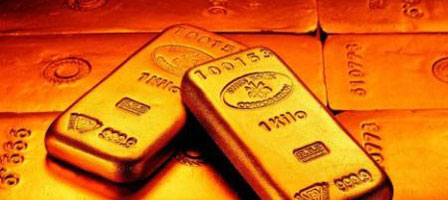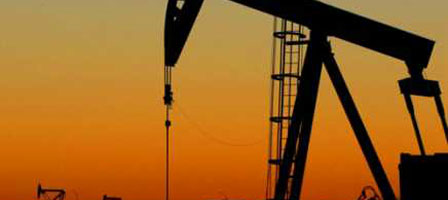Those of you who have been reading my analysis and comments for some time will know that, like most South Africans, I am a gold bull.
My first successful investments were in the yellow metal in the 60s. After a long period of caution in the 80s and 90s, I turned optimistic again in 2002 after my old friend, the German expert Bruno Bandulet, and myself, decided that the total pessimism of all those at the FT’s last annual gold conference in Rome had the smell of a market bottom – which it was.
In an early edition of this newsletter (September 2002), when gold was trading around $313, I first predicted: “Gold is heading for $1,000.” The rest is history.
But where do we go from here, after a period of consolidation in recent months in the $1,050-1,150 following gold’s new record high of $1,226 in December?
On my usual pilgrimage to London this month to attend the launch of GFMS’s annual Gold Survey*, for the first time I heard some scary pessimism from the research consultancy’s executive chairman, Philip Klapwijk.
He even suggested that the price may fall back as low as $700 – which would be almost 40 per cent below current levels.
What worries him is that gold has become unduly dependent on investment demand, much of which could be speculative in nature, because high prices have devastated demand for manufacture of jewellery while boosting supply of “scrap” metal – largely from jewellery being sold to raise cash – to record levels.
Last year investment demand almost doubled to 1,901 tons and accounted for 44 per cent of global demand, compared to just 14 per cent as recently as 2007. For the first time investors bought more gold than the jewellery industry.
Between 2007 and last year, annual demand for jewellery fell by 658 tons while annual supply of metal offered for recycling rose by 692 tons. The combined gap in the supply/demand balance was filled by growth in investment demand.
Although that “continues to be buoyed by fresh inflows from both institutional and private investors,” GFMS says, “any major slowdown in the amount of money being allocated to gold would surely result in a tremendous setback for bullion prices.”
It wouldn’t even require investors to sell out of their positions “for the gold price to fall precipitously; they only need to reduce sufficiently their fresh buying”.
Of course, any sustained lower levels in gold prices would generate support from increased jewellery demand and decreased scrap supply. But those would be lagged effects, and could require much lower prices to stabilize things.
Klapwijk says prices would need to fall below $900 to rejuvenate the jewellery market, while prices in the $700-800 range would be needed to produce “really good demand from places like India.”
Why could investment demand fall sharply?
GFMS bases its fear on the assumption that we’re going to see “a more stable economic environment” with rising real interest rates and the “safe haven properties of gold” becoming less relevant.
What could invalidate that assumption?
Surprisingly, the consultancy does not suggest the possibility – which I consider to be a strong one – that the world economy could fail to achieve stability and good sustained growth because of the crippling consequences of the credit crisis, including the second bubble (in government finances), and the severity of trade imbalances.
However, GFMS does say that a collapse in investment demand “appears rather improbable as long as real interest rates stay low or negative in the leading economies, concerns persist or perhaps grow over sovereign debt levels and, related to this, all of the major currencies are viewed with suspicion by a large and growing group of investors.”
Other developments that could sustain investment demand – “possible but not probable in our view” – would be a surge in inflation and/or a fully-fledged dollar crisis.
However in the short term, GFMS remains optimistic. Klapwijk says although he is “very wary” about the next few months, suggesting prices could fall into the $1,050 area, he expects a strong pick-up later in the year, taking prices to or above $1,300.
Where Gold Comes From and Goes To
Metric tons. Source: GFMS
Supply Demand
2008 2009 Chg 2008 2009 Chg
Mine production 2,409 2,572 7% Jewellery 2,193 1,759 -20%
Official sales 232 41 -82% Other fabrication* 438 372 -15%
Old gold scrap 1,316 1,674 27% Dehedging 352 254 -28%
Investment 973 1,901 95%
Totals 3,957 4,287 8% 3,957 4,287 8%
* Excluding coins and medals (added into investment totals)
My own view?
In the short term, gold could ease down as marginal investors drift away to other attractions, given the current optimism about the global economy reflected in buoyant equity prices and some other improving investment fundamentals.
But the risks in financial systems outside Asia remain large, political uncertainties abound, and within months doubts about the sustainability of global economic recovery are likely to re-emerge.
The potential for shocks favourable to investment demand for gold far outweighs the potential for developments that would discourage investors.
Gold is still cheap in real terms
GFMS’s annual study and its accompanying presentations is, as usual, a fascinating source of information for gold buffs. Here are a few examples:
► Easily the biggest source of investment demand for gold last year were the exchange traded funds, which bought 617 tons. Other major sources of demand were Comex investors (404 tons), small investors in mini-bars and the like (270 tons) and mints producing official coins (229 tons).
► In real terms, gold prices are still way below the previous peak in 1980 – of around $1,600.
► Central bankers got it seriously wrong with gold sales, as most of them did with other major decisions. Having sold off so much metal at huge losses relative to current prices, the banks have now pulled in their horns. Net sales fell from a peak of 663 tons in 2005 to 41 last year. There should be a moderate pick-up this year, but only because of 191 tons of on-market sales by the International Monetary Fund.
► The gold mines are producing more in response to higher prices. But cash costs averaged $478 an ounce last year, with production costs (including overheads and capex) reaching $717/oz. Furthermore, GFMS estimates that the long-term sustainable cost of producing the average ounce of gold has reached $925-950 – and “this figure does not allow for any return to shareholders.”
► Above-ground stocks of gold are around 166,000 tons, but more than half that is contained in jewellery. Potential supply from that source would be considerable, but only if prices were to soar.
► Although a fall-off in investment demand has now become a significant risk for the gold price, the potential for an upside surge should investors start to flee paper assets is also huge. All the gold traded on world markets last year was only about $58 billion – a tiny fraction of the capital poured into rescuing the zombie banks, for example, or of the foreign reserves of China.
* Gold Survey 2010 can be obtained from GFMS at $595 a copy. Contact: Charles de Meester on +44 (0) 20 7478 1777. Please mention On Target newsletter!
CopyRight – OnTarget Newsletter by Martin Spring







